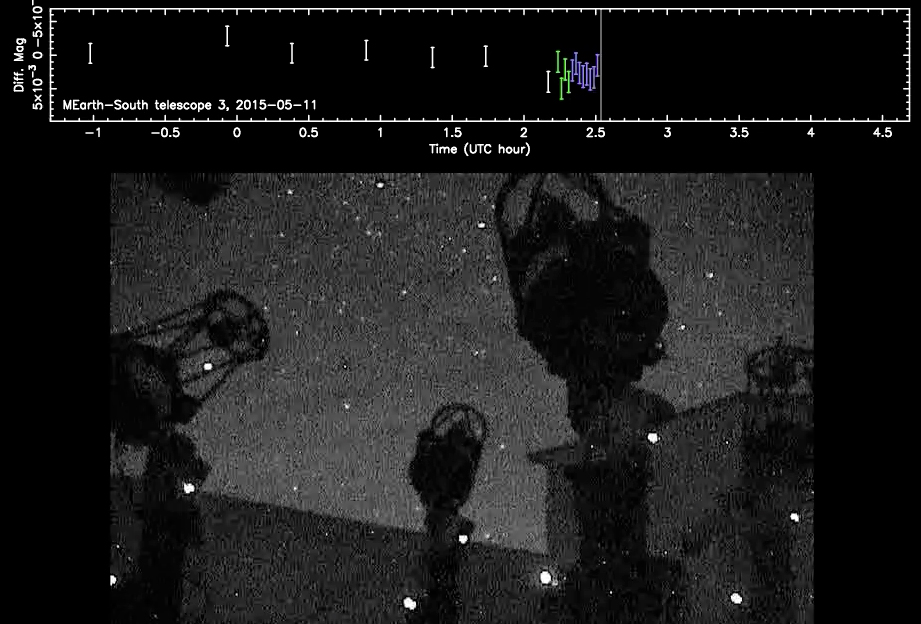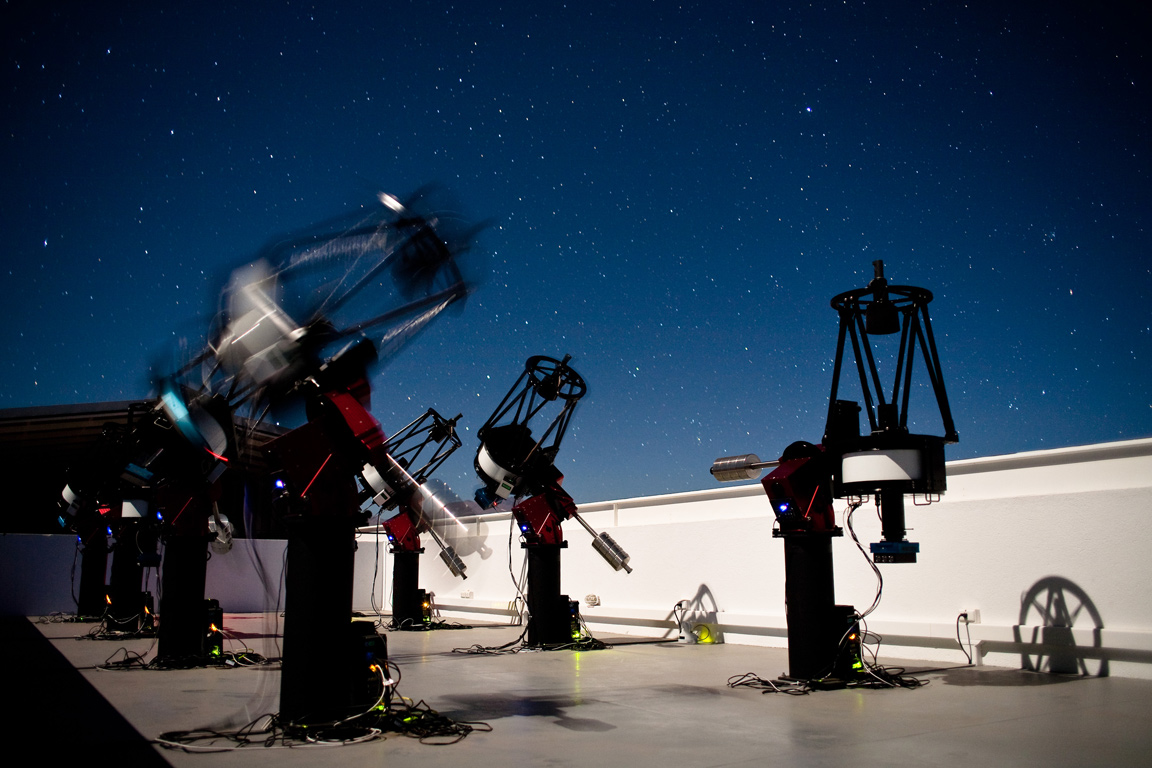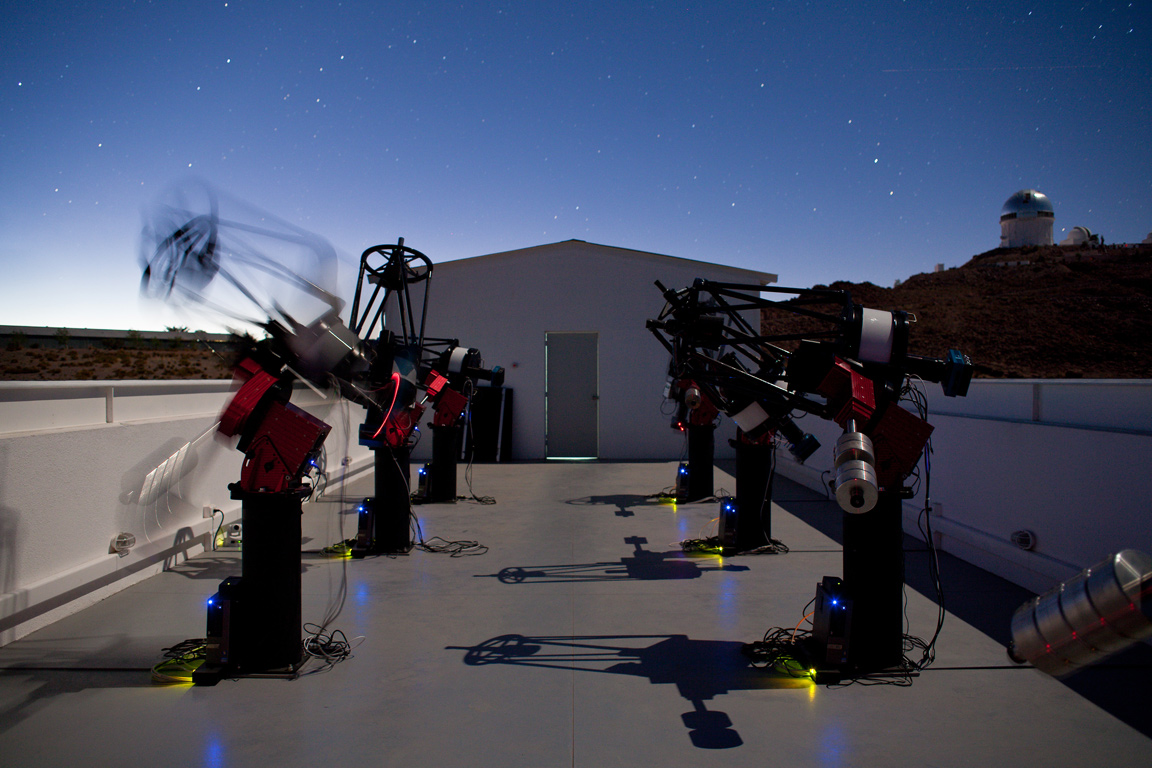Image List
-

GJ 1132b is a unique planet in that we can specify exactly when it was discovered: May 11, 2015. Usually in exoplanets we can't give an exact moment of discovery, since we see the signal emerge slowly in months of data. Since GJ 1132b was found by detecting a transit in real time, we know precisely when it was discovered. In this time-lapse movie the graph at top shows the brightness of the red dwarf star GJ 1132, while the bottom panel shows the MEarth-South array. When the telescope at lower right detects the start of the planetary transit, it immediately targets that star and makes continuous observations until the end of the transit. (The MEarth team grants unrestricted permission for reuse and redistribution of this movie.)
Jonathan Irwin -

The MEarth-South telescope array, located on Cerro Tololo in Chile, searches for planets by monitoring the brightness of nearby, small stars. This long-exposure photograph shows MEarth-South telescopes observing at night; the blurred telescope is slewing from one star to another. (The MEarth team grants unrestricted permission for reuse and redistribution of this image.)
Jonathan Irwin -

The MEarth-South telescope array, located on Cerro Tololo in Chile, searches for planets by monitoring the brightness of nearby, small stars. This long-exposure photograph shows MEarth-South telescopes observing at night; the blurred telescope is slewing from one star to another.(The MEarth team grants unrestricted permission for reuse and redistribution of this image.)
Jonathan Irwin -

The MEarth-South telescope array, located on Cerro Tololo in Chile, searches for planets by monitoring the brightness of nearby, small stars. This photograph shows the array, comprising eight 40-cm telescopes, at twilight.(The MEarth team grants unrestricted permission for reuse and redistribution of this image.)
Jonathan Irwin -

In this artist's conception GJ 1132b, a rocky exoplanet very similar to Earth in size and mass, circles a red dwarf star. GJ 1132b is relatively cool, about 450 degrees F, and could potentially host an atmosphere. At a distance of only 39 light-years, it will be a prime target for additional study with Hubble and future observatories like the Giant Magellan Telescope. (This image is free to reuse or redistribute with attribution.)
Dana Berry / Skyworks Digital / CfA